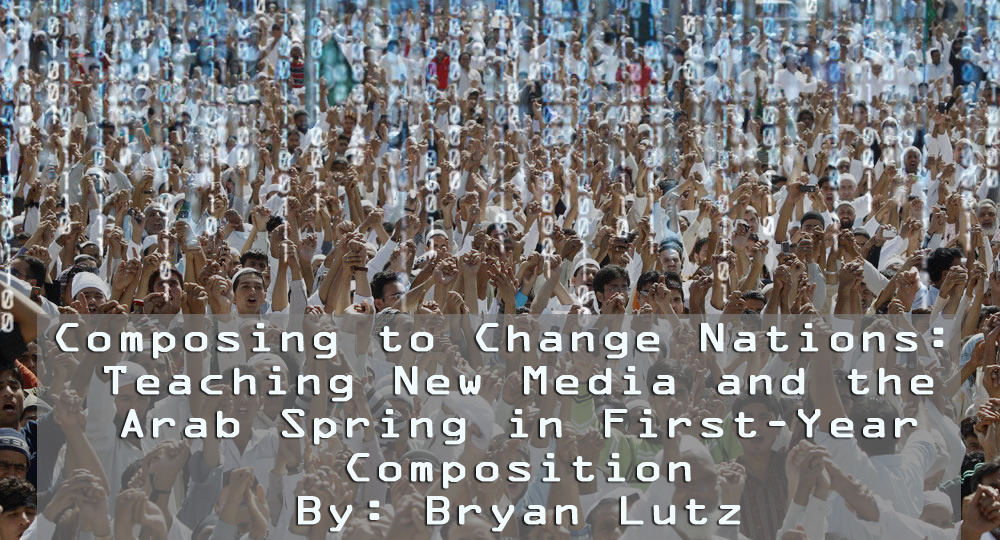Introduction
The Arab Spring is a new kind of revolution—what Wael Gohnim calls, “Revolution 2.0”—where conventional forms of civil disobedience are transformed by the capabilities of new media technology. Its participants are Millennials who use technology to both innovate and compose as a means to demand change from their governments. Though these revolutions are far from over, the movements overcame what were thought to be barriers preventing new media from achieving its liberatory potential: Market forces were not able to stop the movement, internet controls were transcended by the ingenuity of the people, and identity was constructed through compositions of text, image, and video. The affordances of social networking were used to coordinate efforts and recruit individuals, and even individuals without direct access to the internet participated side by side with people could. In addition, new media worked in an almost symbiotic relationship with people composing on the ground. This relationship allowed participants to effectively raise awareness of the more violent actions of the ruling governments against their citizens. This awareness reached international news sources that responded in kind by raising awareness for their cause with unprecedented velocity. The Arab Spring’s success, though incomplete, is evident in the ousting of leaders who held power for decades.
In rhetoric and composition we look at new media in terms of the affordances of different modalities. That is to say that when we use a blog or a wiki, or when we compose with sound or image or text, we are asking questions about what these media allow students to do (Ed. Selfe, 2006). Under the guidance of Dr. Rouzie at Ohio University my colleagues and I are exploring ways to create a pedagogy that integrates technology in our first-year composition classes. We do so not only to understand the rhetorical power of multiple modes of composition, but also because this process helps students to better understand written language (Takyoshi and Selfe, 2007, pp. 7-9). As a new instructor of composition, my own exploration in new media became an exploration of the Arab Spring. I became excited at the possibility that the news reports were true, that democracy was happening, non-violently, and largely because people in Tunisia and Egypt were using new media for advocacy. But I engaged this phenomenon with a critical consciousness, and acknowledged criticisms that such a revolution could be just media hype. My conclusion is that we can call these new media revolutions, and furthermore we can explore this same power in first-year composition. To this end I offer instructors an essay assignment that asks students to engage in advocacy, and to expand upon current uses of new media beyond what Richard Ferdig and Keye Trammell (2004) would call, “a student’s personal online soapbox” (pp. 16).
In this article I first present my analysis of the Arab Spring by engaging both the affirmations and contentions surrounding Revolution 2.0. Second, I provide a brief history of how Global Turns and civic engagement has affected both advocacy groups, and the teaching of composition. Finally, I offer a multimodal blog essay assignment that innovates with new media in ways similar to the Arab Spring, thereby challenging students to become cyber advocates. My argument is that the Arab Spring has taught us new lessons about composing with new media and we should challenge students to explore that power in first-year composition.
